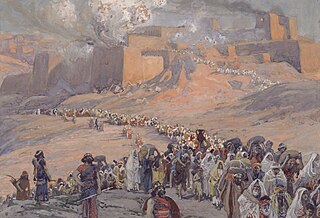 W
WThe Babylonian captivity or Babylonian exile is the period in Jewish history during which a large number of Judeans from the ancient Kingdom of Judah were captives in Babylon, the capital city of the Neo-Babylonian Empire, following their defeat in the Jewish–Babylonian War and the destruction of Solomon's Temple in Jerusalem. The event is described in the Hebrew Bible, and its historicity is supported by archaeological and non-biblical evidence.
 W
WAhasuerus is a name applied in the Hebrew Bible to three rulers and to a Babylonian official in the Book of Tobit.
 W
WArtaxerxes I was the fifth King of Kings of the Achaemenid Empire, from 465 to 424 BC. He was the third son of Xerxes I.
 W
WArsaces, better known by his dynastic name of Artaxerxes II was King of Kings of the Achaemenid Empire from 405/4 BC to 358 BC. He was the son and successor of Darius II and his mother was Parysatis.
 W
WEcbatana was an ancient city in Media in western Iran. It is believed that Ecbatana is in Hagmatana Hill, an archaeological mound in Hamedan.
 W
WHamadan or Hamedan is the capital city of Hamadan Province of Iran. At the 2019 census, its population was 783,300 in 230,775 families.The majority of people living in Hamadan identify as ethnic Persians.
 W
WNebuchadnezzar II also spelled Nebuchadrezzar II, was the second king of the Neo-Babylonian Empire, ruling from the death of his father Nabopolassar in 605 BC to his own death in 562 BC. Historically known as Nebuchadnezzar the Great, he is typically regarded as the empire's greatest king. Nebuchadnezzar remains famous for his military campaigns in the Levant, for his construction projects in his capital, Babylon, and for the important part he played in Jewish history. Ruling for 43 years, Nebuchadnezzar was the longest-reigning king of the Chaldean dynasty. At the time of his death, Nebuchadnezzar was among the most powerful rulers in the world.
 W
WThe return to Zion refers to the event in the biblical books of Ezra–Nehemiah in which the Jews returned to the Land of Israel from the Babylonian exile following the decree by the emperor Cyrus the Great, the conqueror of the Neo-Babylonian Empire in 539 BCE, also known as Cyrus's edict.